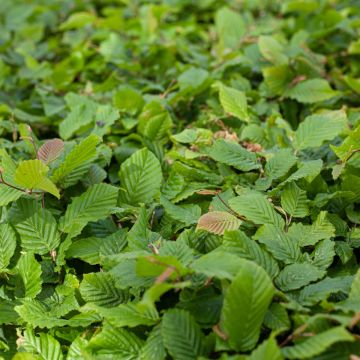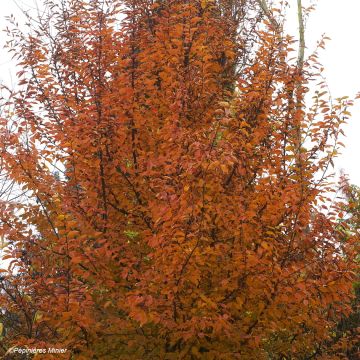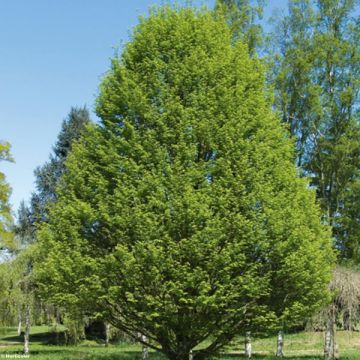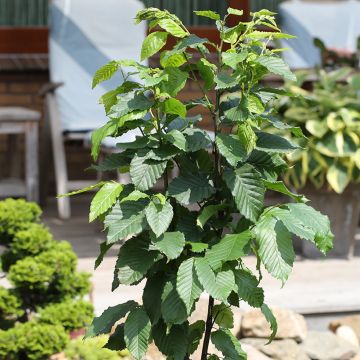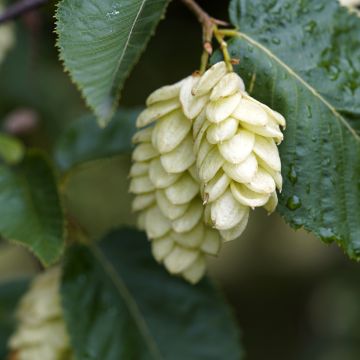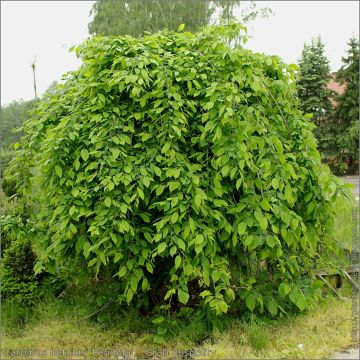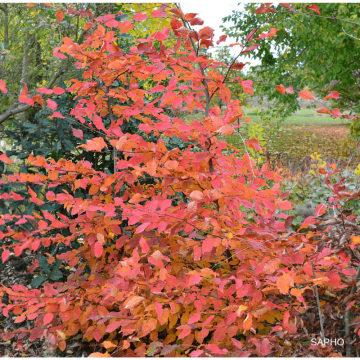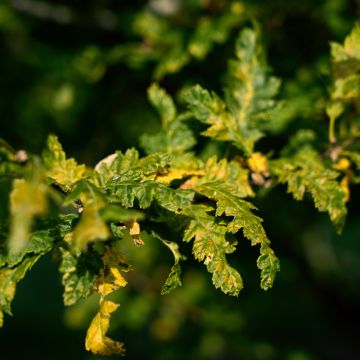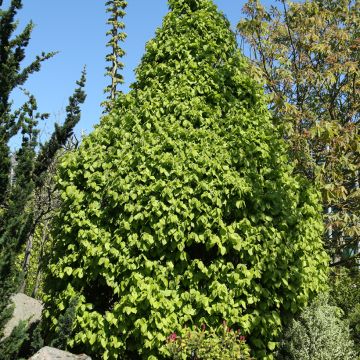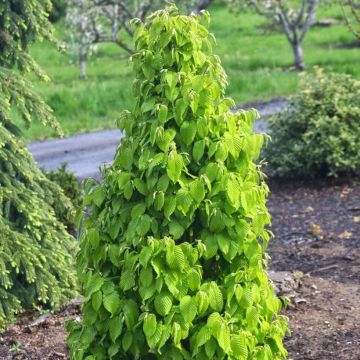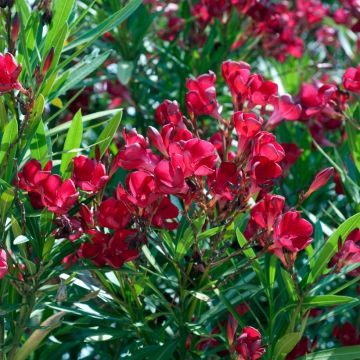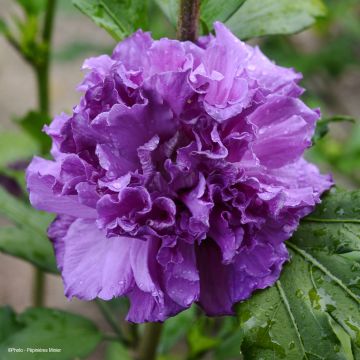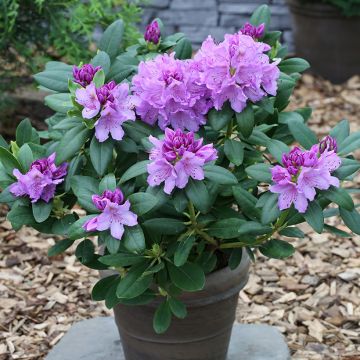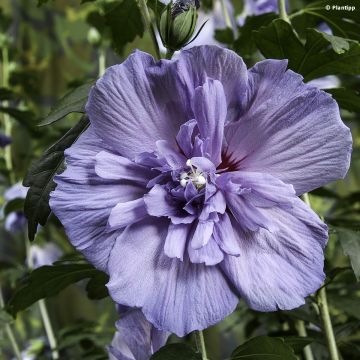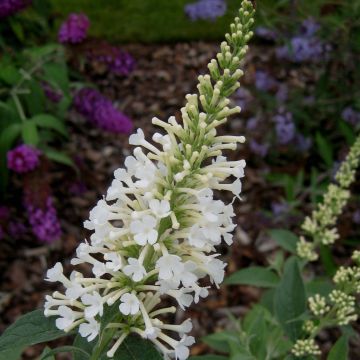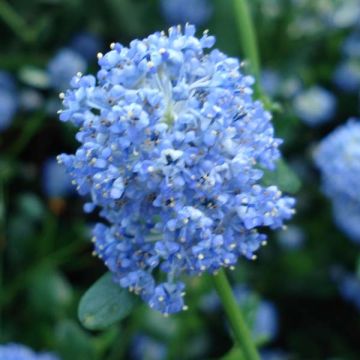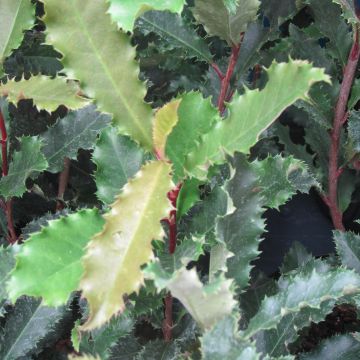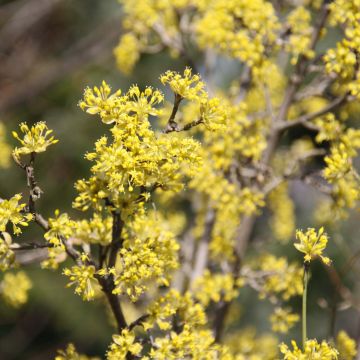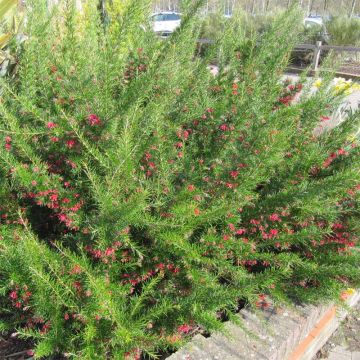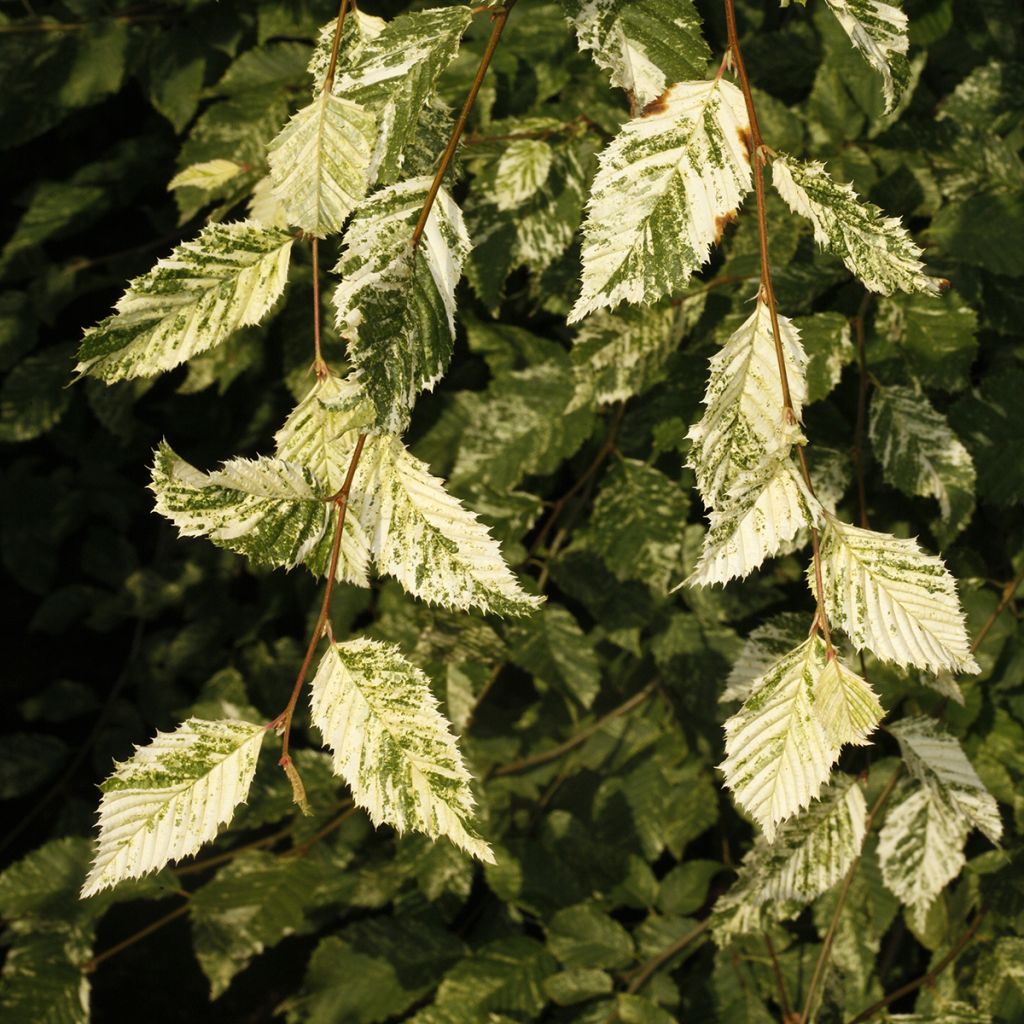

Carpinus betulus Foliis Argenteovariegatis Pendula - Hornbeam
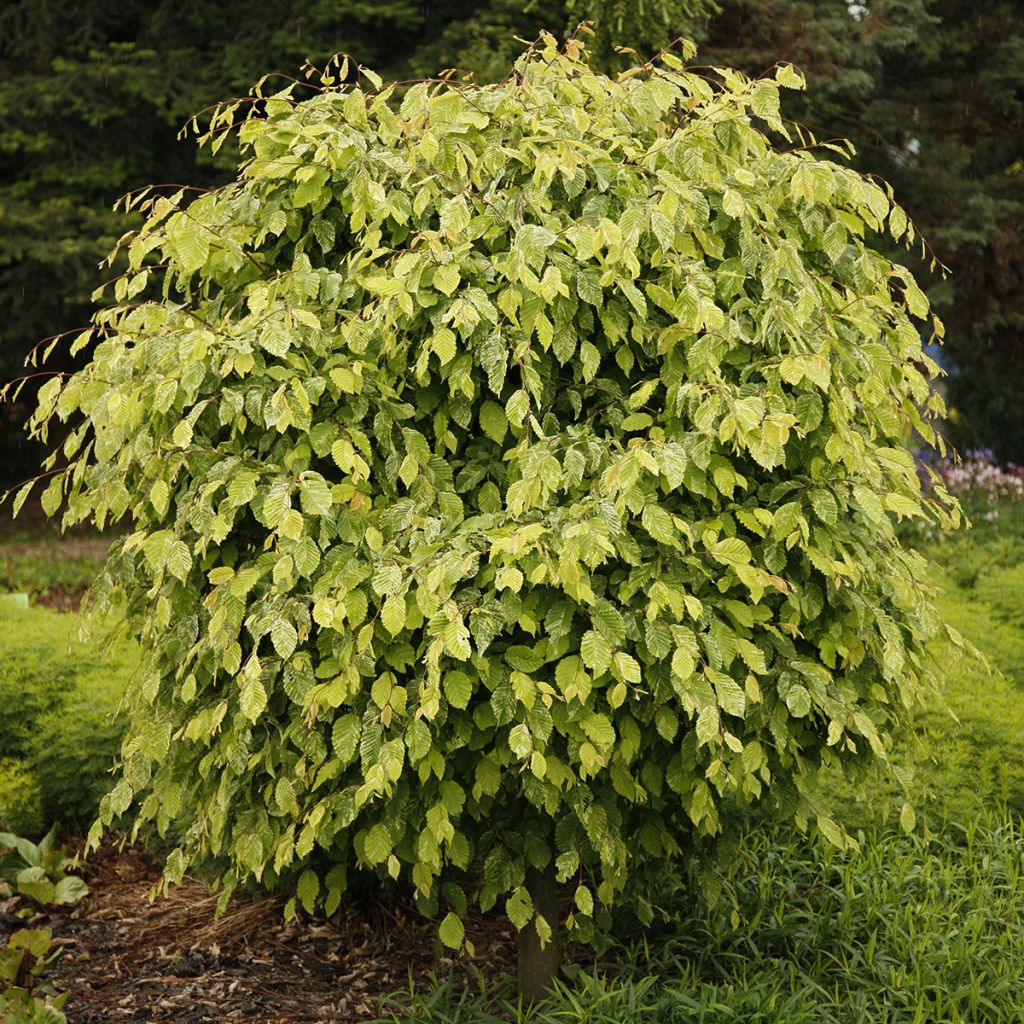

Carpinus betulus Foliis Argenteovariegatis Pendula - Hornbeam
Carpinus betulus Foliis Argenteovariegatis Pendula - Hornbeam
Carpinus betulus Foliis Argenteovariegatis Pendula
Common Hornbeam
Why not try an alternative variety in stock?
View all →This plant carries a 24 months recovery warranty
More information
We guarantee the quality of our plants for a full growing cycle, and will replace at our expense any plant that fails to recover under normal climatic and planting conditions.
Oversize package: home delivery by special carrier from €6.90 per order..
Express home delivery from €8.90.
Delivery to Corse prohibited: UE law prohibits the import of this plant from mainland France to Corse as part of the fight against Xylella fastidiosa. Please accept our sincere apologies.
More information
Does this plant fit my garden?
Set up your Plantfit profile →
Description
The Carpinus betulus 'Foliis Argenteovariegatis Pendula' is an old and beautiful variety of common hornbeam with variegated foliage. In this very rare form, the leaves are speckled and splashed with white in the most beautiful way. Its habit is not truly weeping, contrary to what its name suggests. The branches of this small tree are wider than tall and slightly pendulous, with spreading twigs. Vigorous, very hardy and resistant, it is easy to cultivate.
The Carpinus betulus, sometimes called hornbeam, is a tree native to the forests of Europe and Asia Minor (Turkey and Ukraine), with a pyramidal habit that becomes more rounded over time. Its straight trunk is covered with pale grey to grey-green bark. The bark is smooth on young hornbeams and becomes fissured as it ages. Its flowers are monoecious, either male or female, with a slightly different appearance and emerge in autumn (male catkins) and spring (female catkins). The Carpinus betulus produces hanging clusters of fruits, 3 to 6 cm long, green in colour and turning yellow-brown when mature, in late September. These fruits are called samaras and are toxic.
The 'Foliis Argenteovariegatis Pendula' common hornbeam is an old variety created by Feliks Rożański in Podzamcze (Poland) before 1905. It was rediscovered nearly 100 years later by Włodzimierz Seneta and introduced into cultivation by the Polish nursery Szmit. This plant distinguishes itself from the typical species with its wider-than-tall habit, spreading and slightly pendulous branches. Its variegated foliage is the main feature of this rare form: it is irregularly speckled and streaked with white on a green background. Its dark, grey-brown twigs bear ovate and dentate leaves, 8 to 10 cm long. It is a low-growing tree, reaching a height of 2 to 3 m and a width of 4 to 4.5 m at 10 or 15 years old. Ultimately, it can grow to a height of 6 to 8 m.
The 'Foliis Argenteovariegatis Pendula' hornbeam thrives in partial shade. It is a very hardy and undemanding plant, adapting to any sufficiently deep soil, even dry, including urban environments. It is perfect for medium to large gardens. It can be used as a solitary tree in the middle of a lawn, or integrated into a large shrub border, where it adds elegance and light. Regular pruning is recommended to constantly produce new shoots with beautifully coloured leaves.
The wood of the common hornbeam is used for heating, paper production, as well as tools and toys for children. It is a shrub that rarely lives beyond 100 years in nature.
Report an error about the product description
Plant habit
Flowering
Foliage
Safety measures
Botanical data
Carpinus
betulus
Foliis Argenteovariegatis Pendula
Betulaceae
Common Hornbeam
Cultivar or hybrid
atteinterespiratoire
Cette plante peut entraîner des symptômes allergiques.
Evitez de la planter si vous ou vos proches souffrez de rhinite saisonnière ("rhume des foins").
Davantage d'informations sur https://plantes-risque.info
Other Carpinus - Hornbeam
Planting and care
The Carpinus betulus 'Foliis Argenteovariegatis Pendula' particularly appreciates cool, semi-shaded areas, but can also thrive in non-intense sunlight. Place it sheltered from cold and drying winds in any type of well-drained soil. However, it is sensitive to acidic soils. The Common Hornbeam withstands cold and heat well, but does not tolerate summer heatwaves, especially when the soil is shallow. It thrives in a continental climate. It may be susceptible to coral disease and can be targeted by caterpillars and aphids.
Planting period
Intended location
Care
This item has not been reviewed yet - be the first to leave a review about it.
Hedge shrubs
Haven't found what you were looking for?
Hardiness is the lowest winter temperature a plant can endure without suffering serious damage or even dying. However, hardiness is affected by location (a sheltered area, such as a patio), protection (winter cover) and soil type (hardiness is improved by well-drained soil).

Photo Sharing Terms & Conditions
In order to encourage gardeners to interact and share their experiences, Promesse de fleurs offers various media enabling content to be uploaded onto its Site - in particular via the ‘Photo sharing’ module.
The User agrees to refrain from:
- Posting any content that is illegal, prejudicial, insulting, racist, inciteful to hatred, revisionist, contrary to public decency, that infringes on privacy or on the privacy rights of third parties, in particular the publicity rights of persons and goods, intellectual property rights, or the right to privacy.
- Submitting content on behalf of a third party;
- Impersonate the identity of a third party and/or publish any personal information about a third party;
In general, the User undertakes to refrain from any unethical behaviour.
All Content (in particular text, comments, files, images, photos, videos, creative works, etc.), which may be subject to property or intellectual property rights, image or other private rights, shall remain the property of the User, subject to the limited rights granted by the terms of the licence granted by Promesse de fleurs as stated below. Users are at liberty to publish or not to publish such Content on the Site, notably via the ‘Photo Sharing’ facility, and accept that this Content shall be made public and freely accessible, notably on the Internet.
Users further acknowledge, undertake to have ,and guarantee that they hold all necessary rights and permissions to publish such material on the Site, in particular with regard to the legislation in force pertaining to any privacy, property, intellectual property, image, or contractual rights, or rights of any other nature. By publishing such Content on the Site, Users acknowledge accepting full liability as publishers of the Content within the meaning of the law, and grant Promesse de fleurs, free of charge, an inclusive, worldwide licence for the said Content for the entire duration of its publication, including all reproduction, representation, up/downloading, displaying, performing, transmission, and storage rights.
Users also grant permission for their name to be linked to the Content and accept that this link may not always be made available.
By engaging in posting material, Users consent to their Content becoming automatically accessible on the Internet, in particular on other sites and/or blogs and/or web pages of the Promesse de fleurs site, including in particular social pages and the Promesse de fleurs catalogue.
Users may secure the removal of entrusted content free of charge by issuing a simple request via our contact form.
The flowering period indicated on our website applies to countries and regions located in USDA zone 8 (France, the United Kingdom, Ireland, the Netherlands, etc.)
It will vary according to where you live:
- In zones 9 to 10 (Italy, Spain, Greece, etc.), flowering will occur about 2 to 4 weeks earlier.
- In zones 6 to 7 (Germany, Poland, Slovenia, and lower mountainous regions), flowering will be delayed by 2 to 3 weeks.
- In zone 5 (Central Europe, Scandinavia), blooming will be delayed by 3 to 5 weeks.
In temperate climates, pruning of spring-flowering shrubs (forsythia, spireas, etc.) should be done just after flowering.
Pruning of summer-flowering shrubs (Indian Lilac, Perovskia, etc.) can be done in winter or spring.
In cold regions as well as with frost-sensitive plants, avoid pruning too early when severe frosts may still occur.
The planting period indicated on our website applies to countries and regions located in USDA zone 8 (France, United Kingdom, Ireland, Netherlands).
It will vary according to where you live:
- In Mediterranean zones (Marseille, Madrid, Milan, etc.), autumn and winter are the best planting periods.
- In continental zones (Strasbourg, Munich, Vienna, etc.), delay planting by 2 to 3 weeks in spring and bring it forward by 2 to 4 weeks in autumn.
- In mountainous regions (the Alps, Pyrenees, Carpathians, etc.), it is best to plant in late spring (May-June) or late summer (August-September).
The harvesting period indicated on our website applies to countries and regions in USDA zone 8 (France, England, Ireland, the Netherlands).
In colder areas (Scandinavia, Poland, Austria...) fruit and vegetable harvests are likely to be delayed by 3-4 weeks.
In warmer areas (Italy, Spain, Greece, etc.), harvesting will probably take place earlier, depending on weather conditions.
The sowing periods indicated on our website apply to countries and regions within USDA Zone 8 (France, UK, Ireland, Netherlands).
In colder areas (Scandinavia, Poland, Austria...), delay any outdoor sowing by 3-4 weeks, or sow under glass.
In warmer climes (Italy, Spain, Greece, etc.), bring outdoor sowing forward by a few weeks.

































